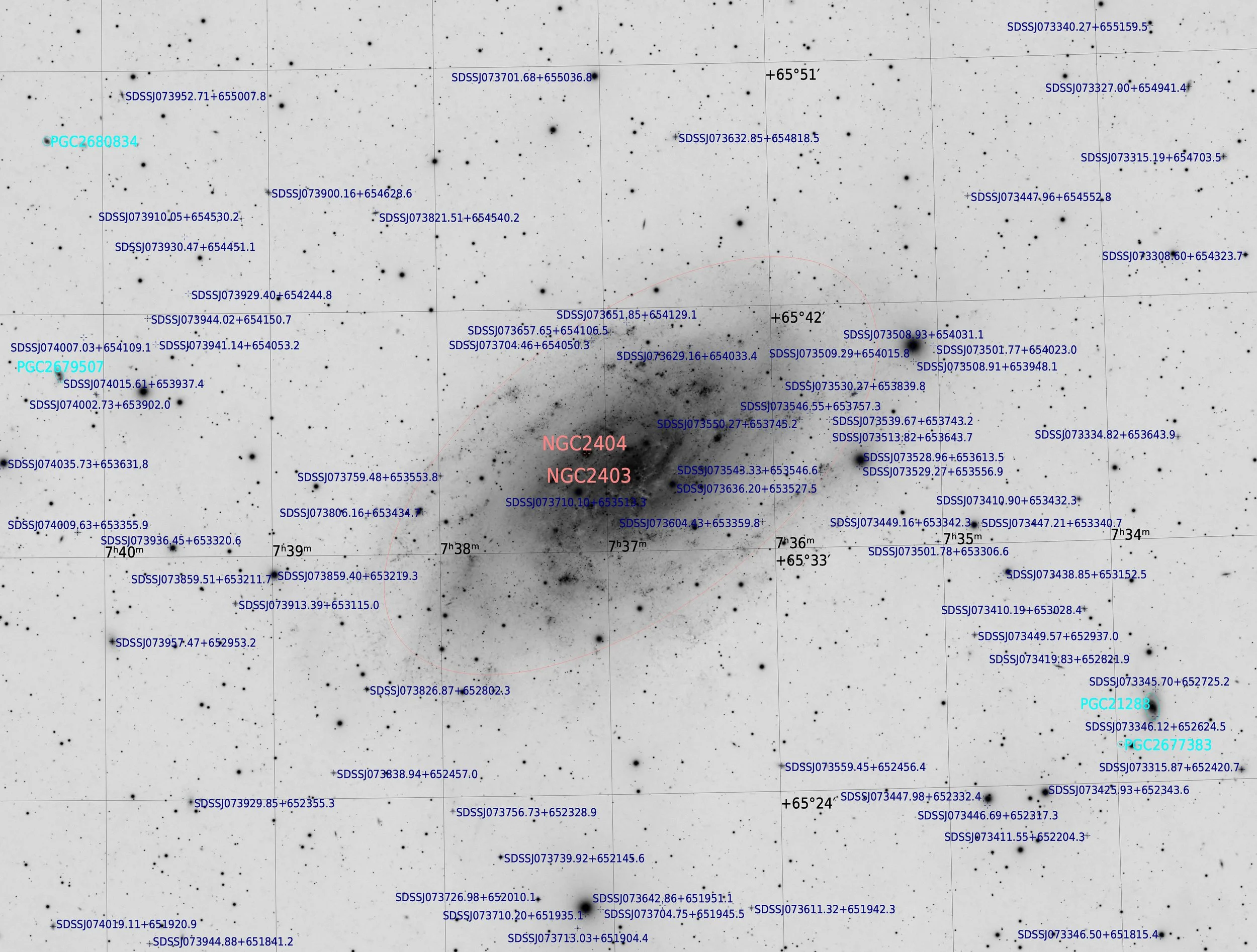NGC 2403
About the Subject
NGC 2403 is an intermediate spiral galaxy located in Camelopardalis. It resembles the better known and much closer Triangulum galaxy in its appearance due to the structure and shape as well as the large number of star forming regions. It is, in fact, a bit larger than the Triangulum galaxy at 90,000 light years diameter, but it appears quite a bit smaller in the night sky due to the much large distance of 9.6 million light years.
NGC 2403 was discovered by William Herschel in 1788, and it is one of only a handful of galaxies in which Edwin Hubble was able to detect Cepheid variables using the Hale telescope on Mount Palomar. It was the first galaxy outside the Milky Way's local group to have its distance accurately determined. NGC 2403 covers an area of sky of 21.9' x 12.3' meaning it appears about half the size of the full moon.
About the Image
This image was made using both RGB filters as well as narrowband H-alpha and OIII filters. The RGB data compose the bulk of the information, but the HII and OIII filters dramatically increase contrast and saturation on the pink/red colored HII star forming regions, adding "pop" to the galaxy. The total integration time is over forty-six hours. Due to the poor seeing for much of the month of February, I chose to cull more than thirty hours of data out of the original dataset. This preserved as much detail in the galaxy as possible, but resulted in loss of depth in the original data set. Specifically, some of the dust and tidal tails that were barely visible in the eighty plus hour image were lost when only the higher quality dataset was used. The result, though, preserved details in the HII regions that were lost in the deeper, softer dataset.parate RGB exposures. Total integration time was 60 hours.
Date, Location, and Equipment
January to February 23, 2025, Rowe, NM, USA
Astro-Physics 305mm Riccardi-Honders Cassegrain @ f/3.8
Astro-Physics 1100GTO AE Mount with Absolute Encoders
QHY600PH Monochrome Camera at -10°C
Chroma 50mm x 50mm filters
3nm H-Alpha
3nm OIII
RGB
12h 30m Red, 11h 10m Green, 11h 15m Blue, 8h 40m H-alpha, 3h 5m OIII, total of 46h 30m integration
Software:
Astro-Physics APCC for mount control and advanced pointing model
NINA for autofocus, sequence of images, and camera control
PHD2 for guiding
PixInsight for calibration and all post processing
This is an HOORGB image balanced using spectrophotometric color calibration on foreground stars. The reds and teals come from the addition of H-alpha and OIII signal respectively in order to make star forming regions, supernova remnants, and planetary nebulae stand out from the continuum galaxy.


